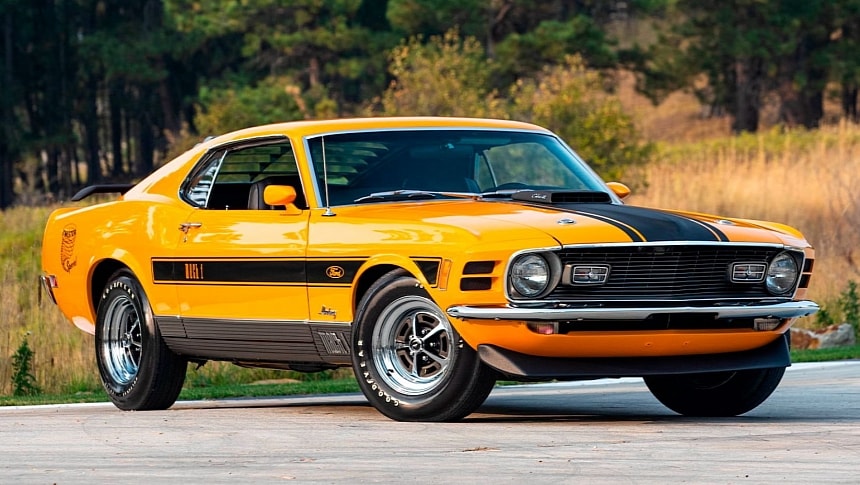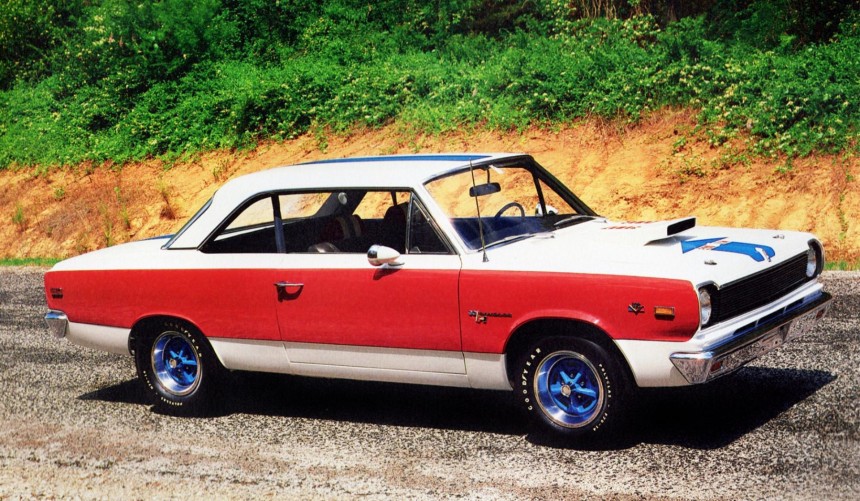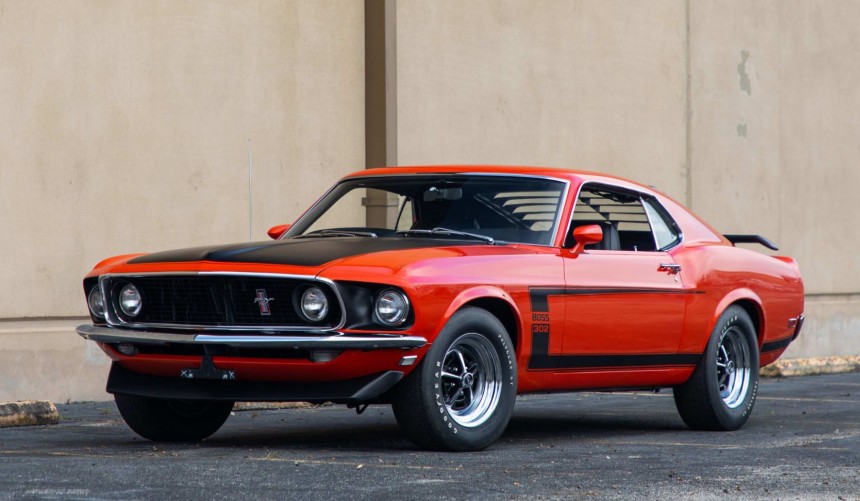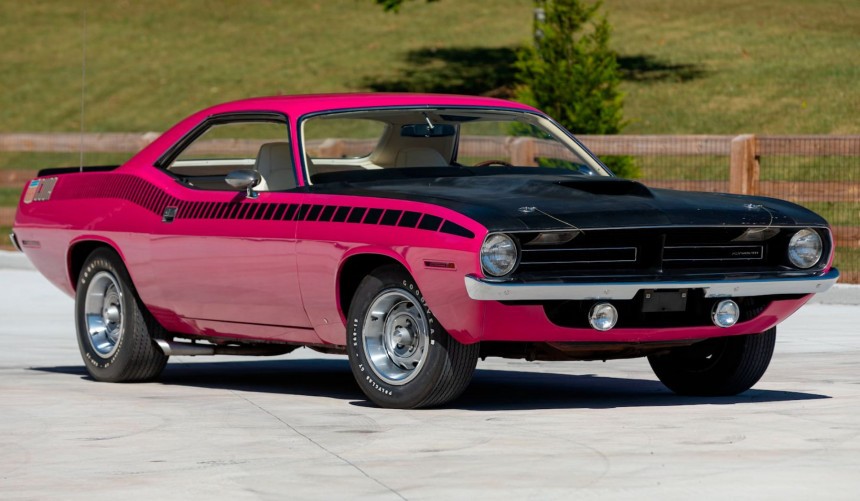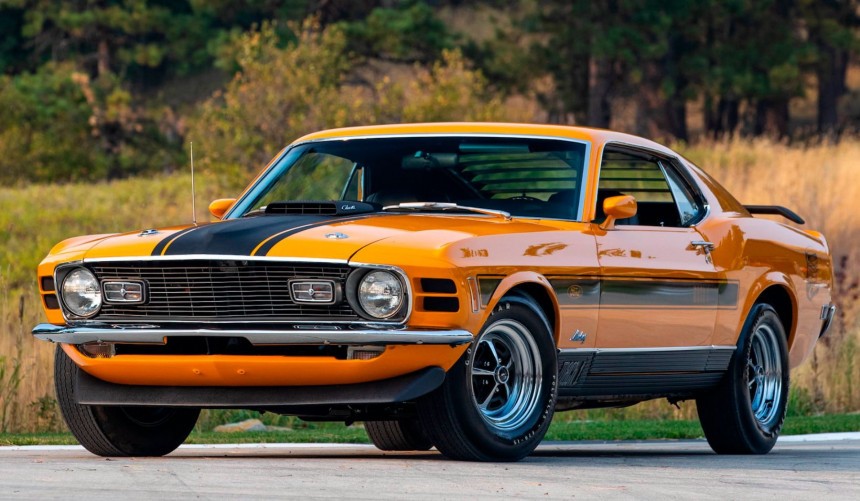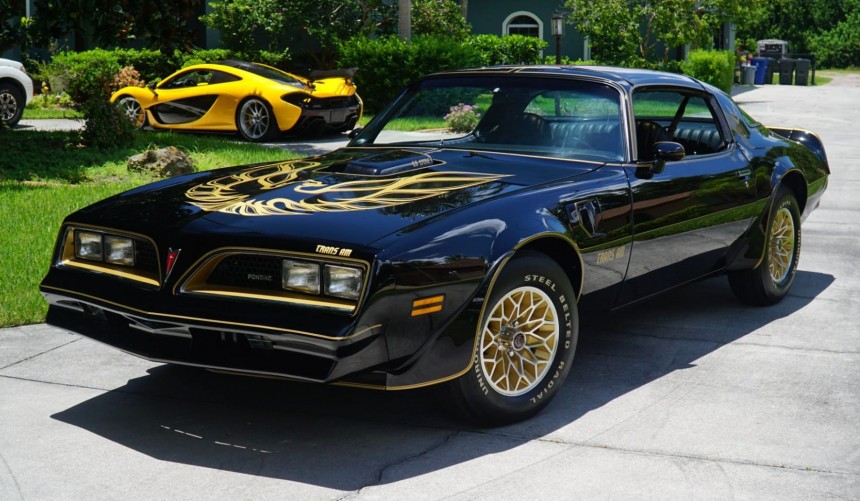Besides potent V8s, muscle cars became extremely popular during the 1960s and 1970s thanks to their unique looks, often bolstered by badass graphic packages.
Muscle cars, or supercars (as they were initially called), emerged during the early 1960s when American carmakers began transplanting large V8 engines from full-size models into smaller and lighter intermediates.
During the early years, only mechanical upgrades and, sometimes, a scooped or bulged hood were the only things that helped distinguish these tire shredders from the standard models they were based on.
However, several manufacturers began offering vivid colors and unique graphic packages to boost their visual appeal, an idea that became a huge success.
As far as factory graphic packages go, there are many memorable iterations, but in this article, we'll take a look at the most iconic five.
For decades, the Kenosha, Wisconsin-based American Motors Corporation tried to be a thorn in the Detroit Big Three's side despite having to do with less workforce and money.
In some respects, it managed to succeed, but when the muscle car era began, AMC's lineup lacked a true high-performance intermediate.
That changed in 1969 when the SC/Rambler hit the streets.
Based on the aging, third-gen Rambler and developed in collaboration with Hurst Performance, the SC (SuperCar) received a host of chassis upgrades and a 315-hp 390-ci (6.4-liter) V8 borrowed from the AMX that breathed through a massive hood scoop.
To cut production costs, every SC/Rambler was painted white, but to boost visual appeal, customers could choose between two patriotic decal packages.
The first, dubbed "A Scheme," featured two wide red stripes on each side, a thinner blue stripe that ran from the trunk lid to the roof, and a blue arrow accompanied by 390 C.I. lettering that pointed to the hood scoop.
The second, "B Scheme," was more subdued, featuring only red and blue side stripes.
Though most customers opted for the B Scheme, the A Scheme was unquestionably more over the top, and it became one of the most iconic graphics packages of its era.
Unveiled in 1964, the Mustang broke sales records and coined the pony car segment.
Its popularity encouraged Ford to add some serious V8 power to the options list, and by the late 1960s, several versions of the 'Stang were thoroughbred muscle cars.
One of these epic high-performance versions was the legendary Boss 302. Available for the 1969 and 1970 model years, this homologation special was conceived to take on the Camaro in the Trans-Am Series.
As the name implies, it was powered by a Boss 302-ci (5.0-liter) OHV V8 developed specifically for the track and configured to deliver 290 hp in road-legal guise.
The Boss 302 was stylized by Larry Shinoda, who added several unique scoops and spoilers but also designed a badass decal package that, combined with the Grabber colors, became iconic.
On the initial 1969 Boss 302, the package included a blacked-out hood and C-shaped side stripes with Boss 302 lettering.
In 1970, the graphics (as well as the entire Mustang design) received a makeover. The blacked-out hood was replaced with a black center stripe, while the C-shaped side stripes were dropped in favor of the so-called "hockey stick" stripes.
While the redesigned graphics package of 1970 was still pretty cool, in our opinion, the 1969 version is the most iconic Boss 302 look.
Though the Mustang coined the pony car moniker, the Plymouth Barracuda was launched a few weeks before Ford's sales sensation.
Though it never managed to come close to the 'Stang in terms of sales, Plymouth continued to refine the model over the next decade, and in 1970, it launched what became the last, most badass Barracuda iteration.
That year, the Chrysler division also introduced an exciting limited edition of the 'Cuda dubbed AAR.
Like the Mustang Boss 302, it was conceived to homologate Plymouth's latest pony car for the Trans Am series.
Though the entire reasoning for the redesign was to accommodate big-block V8s like the 426 HEMI, the AAR was powered by a unique 340-ci (5.6-liter) small block equipped with a bespoke intake system and three Holley two-barrel carbs that helped it produce 290 hp.
While stock performance was modest, especially when compared to the HEMI-powered version, the AAR featured arguably the coolest graphics package of the entire Barracuda lineup.
Comprised of a blacked-out hood and unique black strobe stripes, the package complemented the high-impact colors perfectly, leading to an iconic look.
Dodge also launched a similar version of the Challenger named T/A, and although it also came with a bespoke graphics package, I think we can all agree that the AAR 'Cuda's was more appealing.
As I mentioned before, during the late 1960s, Ford introduced a series of option packages that turned the Mustang from a pony car to a legitimate muscle car.
One of those packages was the Mach 1, which debuted in the 1969 model year as the high-performance Mustang for the masses.
A year later, a series of 96 Mach 1 regional specials were delivered to the Kansas City District Sales Office.
Dubbed Twister Special, all cars were standard Mach 1s. Forty-eight were equipped with the 335-hp 428 Super Cobra Jet, while the other 48 received the new 351 four-barrel Cleveland, rated at 300 hp.
Visually, however, the Twister Specials were finished in Grabber Orange, and apart from the standard Mach 1 hood stripe, they received additional side stripes and unique cartoonish Twister Special logos on each rear quarter panel.
To this day, the Twister Special remains the rarest, most sought-after first-generation Mustang Mach 1, thanks to its iconic graphics package.
Since its debut in 1969, the Trans Am package became synonymous with high-performance Pontiac excellence.
Initially a package, then a stand-alone sub-model of the Firebird series, the Trans Am might have debuted in the last year of the first generation, but it became legendary throughout the second-gen's lifespan.
Available with the biggest, most potent V8s that Pontiac had to offer, the Trans Am became a muscle car styling icon starting with 1973, the model year during which Pontiac introduced the RPO WW7 Hood Decal.
Nicknamed "Screaming Chicken" or "Rising Phoenix" (among others), the legendary decal became quite possibly the most recognizable graphic in the history of the American automotive industry.
Subtly redesigned several times, its most famous iteration came in 1978 when - combined with the Y84 Special Appearance Package that added gold pinstripes to an all-black finish - it gave birth to arguably the most iconic graphics package ever applied to a muscle car.
During the early years, only mechanical upgrades and, sometimes, a scooped or bulged hood were the only things that helped distinguish these tire shredders from the standard models they were based on.
However, several manufacturers began offering vivid colors and unique graphic packages to boost their visual appeal, an idea that became a huge success.
As far as factory graphic packages go, there are many memorable iterations, but in this article, we'll take a look at the most iconic five.
1969 AMC Hurst SC/Rambler
In some respects, it managed to succeed, but when the muscle car era began, AMC's lineup lacked a true high-performance intermediate.
That changed in 1969 when the SC/Rambler hit the streets.
Based on the aging, third-gen Rambler and developed in collaboration with Hurst Performance, the SC (SuperCar) received a host of chassis upgrades and a 315-hp 390-ci (6.4-liter) V8 borrowed from the AMX that breathed through a massive hood scoop.
To cut production costs, every SC/Rambler was painted white, but to boost visual appeal, customers could choose between two patriotic decal packages.
The first, dubbed "A Scheme," featured two wide red stripes on each side, a thinner blue stripe that ran from the trunk lid to the roof, and a blue arrow accompanied by 390 C.I. lettering that pointed to the hood scoop.
The second, "B Scheme," was more subdued, featuring only red and blue side stripes.
Though most customers opted for the B Scheme, the A Scheme was unquestionably more over the top, and it became one of the most iconic graphics packages of its era.
1969 Ford Mustang Boss 302
Its popularity encouraged Ford to add some serious V8 power to the options list, and by the late 1960s, several versions of the 'Stang were thoroughbred muscle cars.
One of these epic high-performance versions was the legendary Boss 302. Available for the 1969 and 1970 model years, this homologation special was conceived to take on the Camaro in the Trans-Am Series.
As the name implies, it was powered by a Boss 302-ci (5.0-liter) OHV V8 developed specifically for the track and configured to deliver 290 hp in road-legal guise.
The Boss 302 was stylized by Larry Shinoda, who added several unique scoops and spoilers but also designed a badass decal package that, combined with the Grabber colors, became iconic.
On the initial 1969 Boss 302, the package included a blacked-out hood and C-shaped side stripes with Boss 302 lettering.
In 1970, the graphics (as well as the entire Mustang design) received a makeover. The blacked-out hood was replaced with a black center stripe, while the C-shaped side stripes were dropped in favor of the so-called "hockey stick" stripes.
While the redesigned graphics package of 1970 was still pretty cool, in our opinion, the 1969 version is the most iconic Boss 302 look.
1970 Plymouth AAR Cuda
Though it never managed to come close to the 'Stang in terms of sales, Plymouth continued to refine the model over the next decade, and in 1970, it launched what became the last, most badass Barracuda iteration.
That year, the Chrysler division also introduced an exciting limited edition of the 'Cuda dubbed AAR.
Like the Mustang Boss 302, it was conceived to homologate Plymouth's latest pony car for the Trans Am series.
Though the entire reasoning for the redesign was to accommodate big-block V8s like the 426 HEMI, the AAR was powered by a unique 340-ci (5.6-liter) small block equipped with a bespoke intake system and three Holley two-barrel carbs that helped it produce 290 hp.
While stock performance was modest, especially when compared to the HEMI-powered version, the AAR featured arguably the coolest graphics package of the entire Barracuda lineup.
Comprised of a blacked-out hood and unique black strobe stripes, the package complemented the high-impact colors perfectly, leading to an iconic look.
Dodge also launched a similar version of the Challenger named T/A, and although it also came with a bespoke graphics package, I think we can all agree that the AAR 'Cuda's was more appealing.
1970 Ford Mustang Mach 1 Twister Special
One of those packages was the Mach 1, which debuted in the 1969 model year as the high-performance Mustang for the masses.
A year later, a series of 96 Mach 1 regional specials were delivered to the Kansas City District Sales Office.
Dubbed Twister Special, all cars were standard Mach 1s. Forty-eight were equipped with the 335-hp 428 Super Cobra Jet, while the other 48 received the new 351 four-barrel Cleveland, rated at 300 hp.
Visually, however, the Twister Specials were finished in Grabber Orange, and apart from the standard Mach 1 hood stripe, they received additional side stripes and unique cartoonish Twister Special logos on each rear quarter panel.
To this day, the Twister Special remains the rarest, most sought-after first-generation Mustang Mach 1, thanks to its iconic graphics package.
1973-1978 Pontiac Trans Am
Initially a package, then a stand-alone sub-model of the Firebird series, the Trans Am might have debuted in the last year of the first generation, but it became legendary throughout the second-gen's lifespan.
Available with the biggest, most potent V8s that Pontiac had to offer, the Trans Am became a muscle car styling icon starting with 1973, the model year during which Pontiac introduced the RPO WW7 Hood Decal.
Nicknamed "Screaming Chicken" or "Rising Phoenix" (among others), the legendary decal became quite possibly the most recognizable graphic in the history of the American automotive industry.
Subtly redesigned several times, its most famous iteration came in 1978 when - combined with the Y84 Special Appearance Package that added gold pinstripes to an all-black finish - it gave birth to arguably the most iconic graphics package ever applied to a muscle car.
